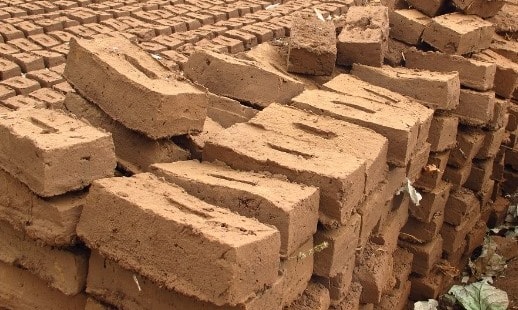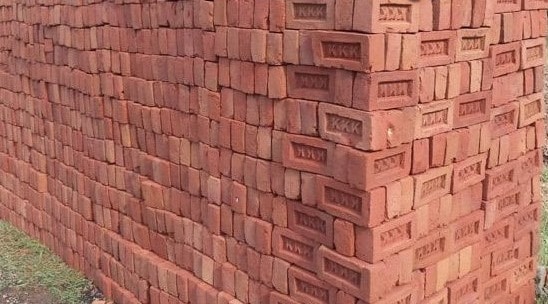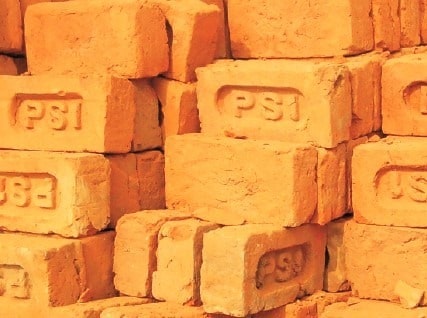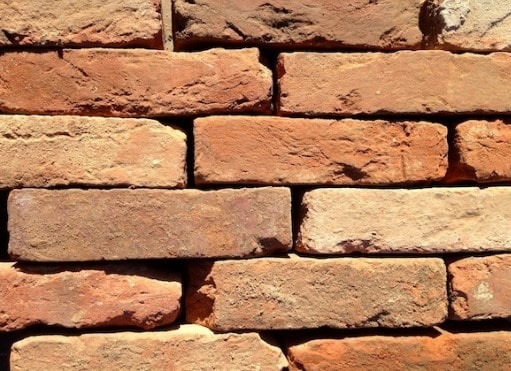Types of Bricks – Their Field Identification, Properties & Uses
For a brick masonry construction, it is desirable to know different types of bricks, their field identification, properties, uses and suitability for different construction works.
A brick is an important construction material which is generally available in rectangular shape manufactured from clay. They are very popular from olden days to modern days because of low cost and durability.
Types of Bricks – Their Properties and Uses:
Based on the manufacturing process, bricks are broadly classified into two types, 1. Sun-Dried or unburnt bricks 2. Burnt bricks
Sun-Dried or Unburnt Bricks
Sun-dried or unburnt bricks are less durable and these are used for temporary structures. Unburnt bricks preparation involved in 3 steps they are preparation of clay, molding and drying. After molding, bricks are subjected to sunlight and dried using heat from sun. So, they are not that much strong and they also have less water resistance and less fire resistance. These bricks are not suitable for permanent structures.

Burnt Bricks
Burnt bricks are good quality bricks but however they also consist some defected bricks. So, burnt bricks are classified into four types and they are
- First class bricks
- Second class bricks
- Third class bricks
- Fourth class bricks
First Class Bricks
First class bricks are good quality bricks compared to other classes. They are molded by table-molding and burnt in large kilns. So, these bricks contain standard shape, sharp edges and smooth surfaces. They are more durable and having more strength. They can be used for permanent structures. However, because of their good properties they are costly than other classes.

Second Class Bricks
Second class bricks are moderate quality bricks and they are molded by ground-molding process. These bricks are also burnt in kilns. But because of ground molding, they do not have smooth surfaces as well as sharp edges. The shape of bricks also irregular due to unevenness in ground. These also will give best results in strength and durability. Smooth plastering is required on the brick structure.

Third Class Bricks
Third class bricks are poor quality bricks which are generally used for temporary structures like unburnt bricks. These are not suitable for rainy areas. They are ground-molded type bricks and burnt in clamps. The surface of this type of bricks are rough and they have unfair edges.

Fourth Class Bricks
Fourth class bricks are very poor quality bricks and these are not used as bricks in the structure. They are crushed and used as aggregates in the manufacturing of concrete. They are obtained by over burning, because of this they gets overheated and obtains brittle nature. So, they can break easily and not suitable for construction purpose.

Identification of Bricks Quality at Construction Site
To build a good quality structure, observing quality of materials is important. Here we discuss about how good bricks are identified at construction site.
- The color of bricks should be bright and uniform.
- They should be well burned and having smooth surfaces and sharp edges.
- Thermal conductivity of bricks should be less and they should be sound proof.
- They shouldn’t absorb more than 20% by weight when we placed it in water.
- When we struck two bricks together, ringing sound should be delivered.
- Structure of bricks should be homogeneous and uniform.
- The bricks should not break when we dropped it form 1m height.
- There should not be any scratch left on the brick when we scratched with finger nail.
- There should not be any white deposits on brick, when we soaked it in water for 24 hrs.
Properties of Bricks
Following are the properties of bricks which represents the importance of bricks in construction. i. Hardness ii. Compressive strength iii. Absorption
Hardness of Bricks
A good quality brick will have resistance against abrasion. This property is called hardness of brick which helps to give permanent nature of brick structure. Because of this property bricks do not damaged by scraping.
Compressive strength of Bricks
Compressive strength or crushing strength is the property of brick which represent the amount of load carried by brick per unit area. According to BIS the minimum compressive strength of brick should be 3.5N/mm2. Crushing strength of bricks reduced when they are soaked in water.
| Crushing strength of Bricks | Grades |
| 7 – 14 N/mm2 | Class A |
| >14N/mm2 | Class AA |
Absorption of Bricks
Bricks are generally absorbs water but having limits. Absorption limit percentage by weight for different classes of bricks is tabulated below.
| Class of Bricks | Water Absorption % by weight |
Heavy duty bricks (special made)
| Only 5% |
First class
| 20% |
Second class
| 22% |
Third class
| 25% |
Uses of Different Types of Bricks
Bricks are widely used in construction industry for different purposes as following.
- Good quality bricks (1st and 2nd class) are used in the construction of buildings, tunnels, pitching works etc.
- 3rd class and unburnt bricks are used for temporary structures.
- 4th class bricks are used as aggregate for making concrete.
- Bricks are also used for architectural purposes to give aesthetic appearance to the structure.
No comments:
Post a Comment